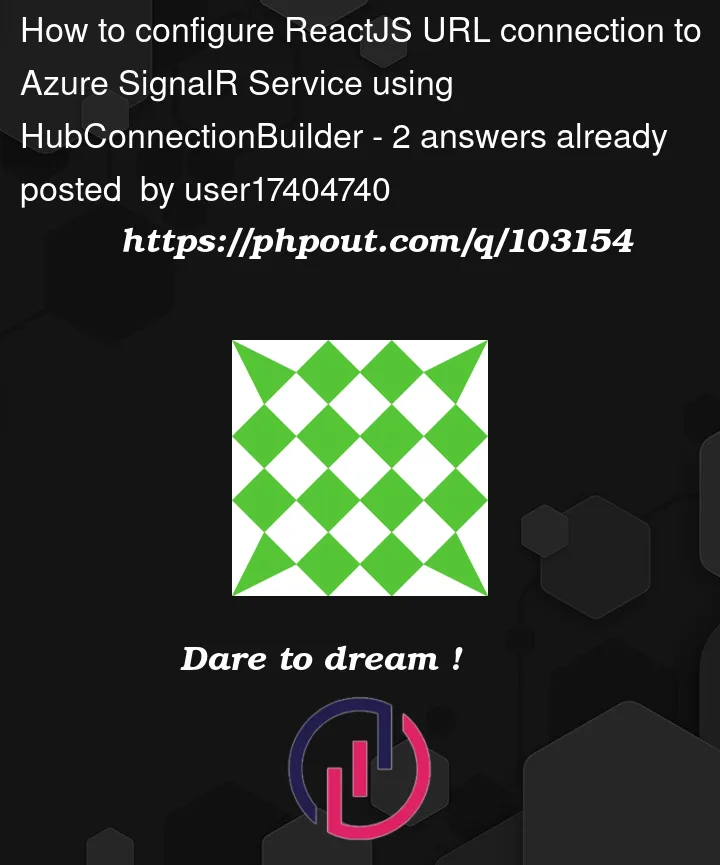Hello I want to know how to setup the HubConnectionBuilder URL to connect my client ReactJS function based app to the Azure SignalR Service. I am using the endpoint=https://xxxxxxxxxxxx-signalr.service.signalr.net;AccessKey=m5QcxLFV+3Wx+tzxxn4SUiBqWZUOmzG8nix4OxxxOhg4=;Version=1.0; as in the following:
useEffect(() => {
console.log('testing const2');
const newConnection = new HubConnectionBuilder()
.withUrl('Endpoint=https://xxxxxxxxxxxx- signalr.service.signalr.net;AccessKey=m5QcxLFV+3Wx+tzMZn4SUiBqWZUOmxxxxix4O1pOhg4=;Version=1.0;')
.withAutomaticReconnect()
.build();
setConnection(newConnection);
}, []);
expecting to make a connection with the Azure SignalR Service. Can someone inform me on how to setup this right as I am receiving this error.
Cannot POST /Endpoint=https://xxxxxxxxxx-signalr.service.signalr.net;AccessKey=m5QcxLFV+3WxxxxxZn4SUiBqWZUOmzG8nix4O1pOhg4=;Version=1.0;/negotiate
: Status code ‘404’ Either this is not a SignalR endpoint or there is a proxy blocking the connection.




2
Answers
I am still researching but basically with a Azure SignalR service you use an Azure Function to obtain a URL with a client or access token. It returns a client app (AKA ReactJS) specific URL to include in withURL of the HubConnectionBuilder. This way each client gets its own URL for security purposes. Make sure CORS enables all origins in Azure resource portal setup.
You’re trying to enter a
SignalR Connection Stringas your endpoint URL. This isn’t correct.You should be entering a normal url string for your parameter in
.withUrl()pointing to yourclient endpointfor your SignalR service. This is usually end endpoint that you’ve mapped in your backend service, which actually lets the SignalR service know exactly what methods, etc. are available to the client.Your connection string is meant to be used in your backend component as per the documentation here.
EDIT:
In order to clarify, even when using SignalR in Serverless Mode, you’re going to need additional components to get everything working:
At minimum you need a
/negotiateendpoint hosted as an Azure Function. This endpoint will then return the necessary connection tokens and details to the client app to then connect and enable messaging. (This endpoint should also handle client authentication).You’re then going to need at least one more Azure Function endpoint, which will be charged with actually handling the logic for your SignalR messages.
Your negotiate Azure Function should look something like this (taken from Tutorial: Azure SignalR Service authentication with Azure Functions):
Your function trigger configuration:
Then, your going to want to have another Azure Function which actually handles the messaging… Broadcasting to all connected clients, for example.
Because it isn’t clear from your question exactly what you want the clients to do, I can’t really help you out with what exactly that function would look like. But, in any case, you have a working example in the link above.